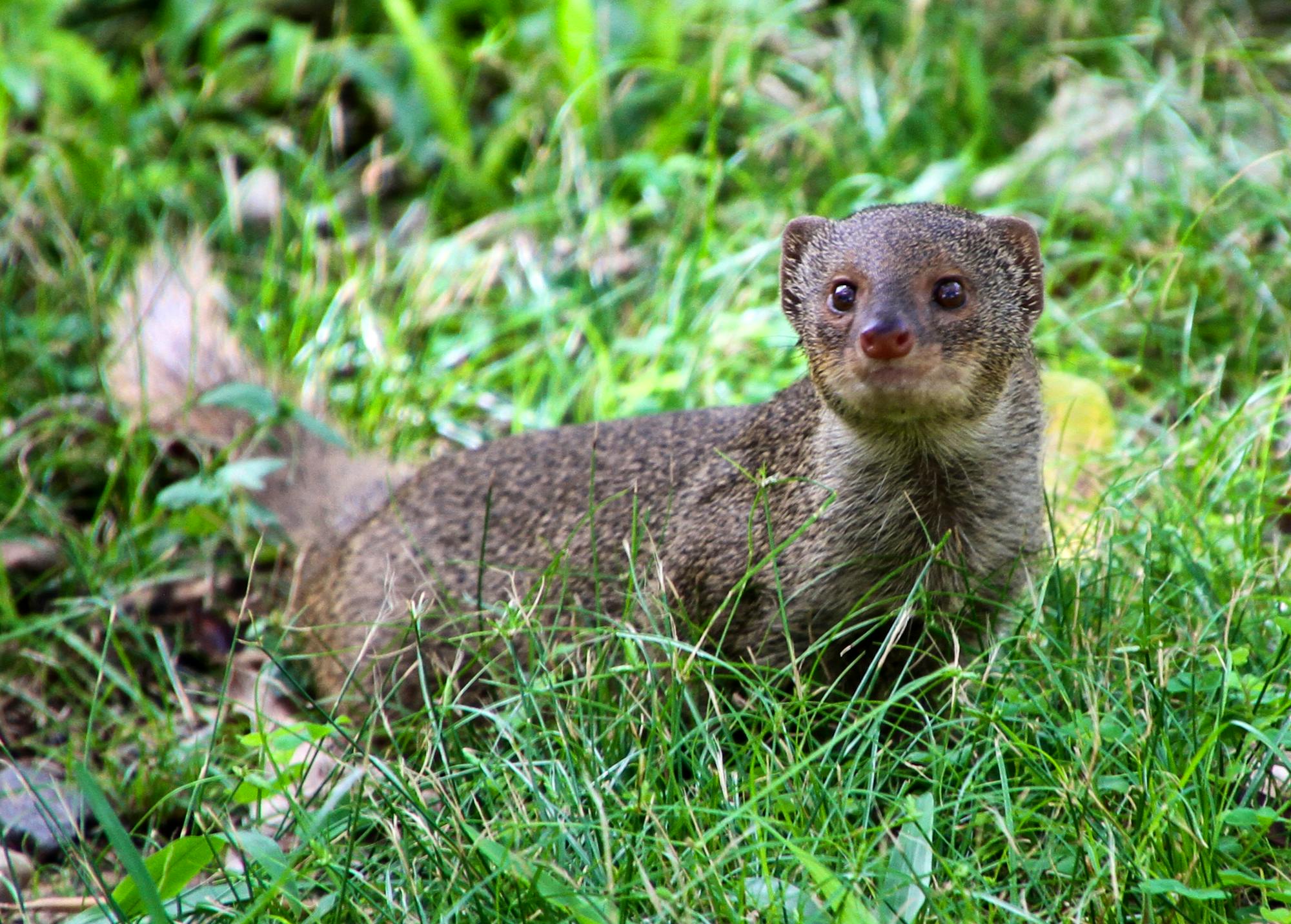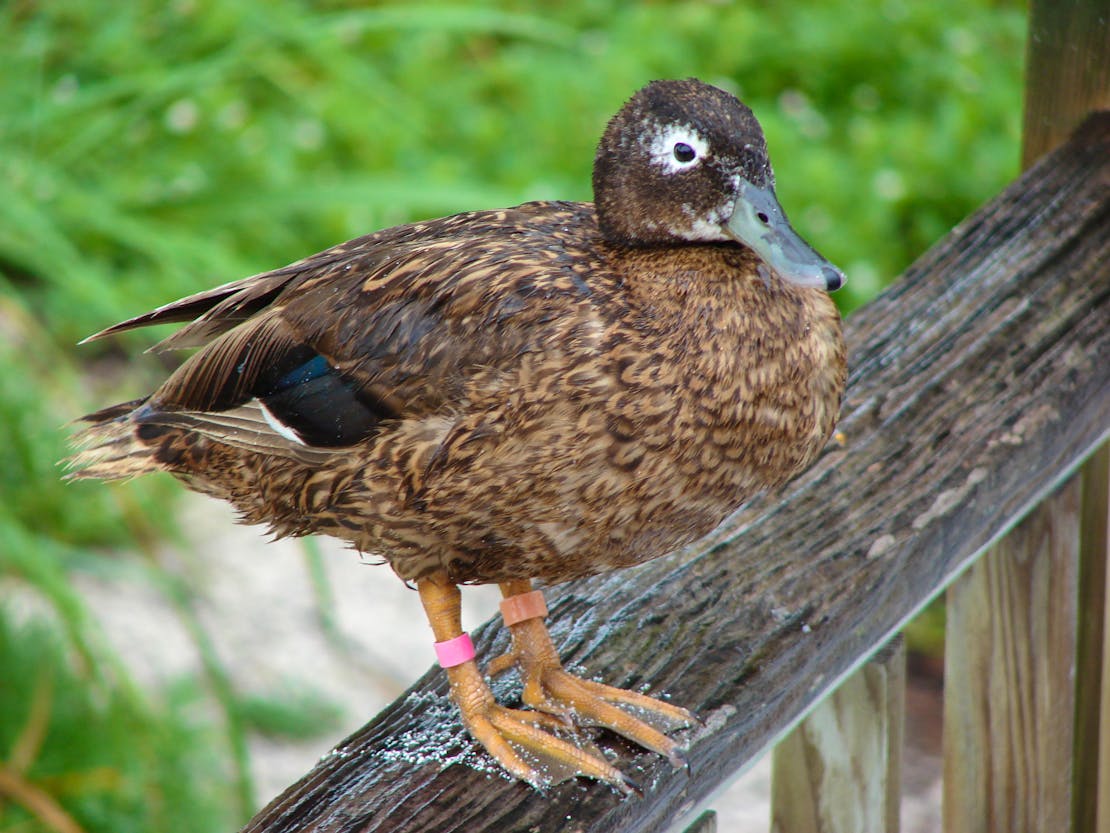This week, I’m attending the Conference of the Parties to the Convention on Biological Diversity (COP15) in Montreal, a meeting that brings together countries and organizations from around the world to agree upon a framework for addressing the biodiversity crisis. It has me thinking about how we got to this point: over a million species are threatened with extinction worldwide. It’s difficult to grasp what an enormous number that is, but if you put a million one-dollar bills in a pile, it would be over 800 feet high—or the length of 17 Northern right whales. The World Economic Forum ranks the international biodiversity crisis in the top three risks to the global economy (together with climate change and cyberattacks).
To tackle this crisis, we first need to know what has caused it. Thankfully, science has made it clear that there are five primary drivers of wildlife extinctions:
- Overexploitation is a common reason for global species decline; unsustainable harvesting negatively impacts many species, from grizzly bears and gray wolves to right whales and sea otters.
- Land- and sea-use change leads to the loss of important habitats, exemplified by the disappearance of mangrove forests and sea grass beds due to coastal development.
- Climate change is altering our environment by shifts in average and extreme temperatures and precipitation.
- Pollution from pesticides, heavy metals, plastics, noise and light pollution threaten species’ health.
- Invasive species, non-native organisms (animals or plants) introduced to a new environment, can cause ecological damage and compete with native species for resources.
These drivers are largely a result of underlying societal values and behaviors. If left unaddressed, they are predicted to continue or increase their detrimental impact. Transformative action is needed to alleviate these threats and the species declines that they contribute to.
Over recent decades, globalization has led to an increase in the international flow of people and goods, bringing people together but also bringing together species that have never coexisted before. Species that are introduced and successfully colonize areas outside their natural ranges are considered ‘invasive’ and can have devastating impacts on species native to the region. Invasive species can cause the decline or extinction of native species, outcompeting them for food, water and space, preying upon them or introducing them to new diseases.
Several species in U.S. territories have already been made extinct thanks to invasive species. The Guam broadbill or Guam flycatcher (Myiagra freycineti) was a common bird species on the island of Guam. However, in the 1940s the brown tree snake (Boiga irregularis) was accidentally introduced to the island. The snake thrived and predated on the broadbill, decimating their numbers. The last sighting of the flycatcher was in 1983 and today it serves as a reminder that extinction is indeed forever.
It's a Hard Duck Life
The Laysan duck (Anas laysanensis), also known as the Laysan teal, almost went the way of the poor Guam broadbill. This brown duck, with a distinctive white ring around its eye, used to be found throughout the Hawaiian archipelago. Its native predators came from the sky and the duck evolved a good strategy for hiding from birds of prey scanning the ground for moving meals: stay very still.
However, this strategy proved to be a poor one against terrestrial mammals. Species not native to the islands, such as rats, pigs and mongooses, were introduced and the Laysan duck was extirpated from most of the Hawaiian Islands. In 1860 it was only found on the atoll island of Laysan (Kauō in Hawaiian)—the smallest geographic range of any duck species in the world. The island gained federal protection when President Theodore Roosevelt established the Hawaiian Islands Bird Reservation. Another President Roosevelt (Franklin Delano) converted the reservation into the Hawaiian Islands National Wildlife Refuge in 1940.
Despite the protections, the Laysan duck continued to slide toward extinction, this time due to the introduction of rabbits to the island. The rabbits quickly ate up the local vegetation, degrading the island’s ecosystem. By 1912 there were just 12 ducks left as the island became a barren dustbowl. In 1923, a U.S. Bureau of Biology Survey (the predecessor of the U.S. Fish and Wildlife Service) expedition eradicated rabbits from the island and the number of ducks began to slowly increase. However, it was too late for other endemic species of Laysan Island and several went extinct including the Laysan rail (Zapornia palmeri), the Laysan millerbird (Acrocephalus familiaris familiaris) and the Laysan honeycreeper (Himatione fraithii).
In 1967, the Laysan duck was among the first group of species listed as “endangered” under the Endangered Species Preservation Act, the predecessor to the U.S. Endangered Species Act. By 2004 the population had grown to 576 ducks, and in 2004 and 2005, 42 ducks were transferred to the Midway Atoll National Wildlife Refuge in the hopes of establishing a second population. In 2014, 28 Laysan ducks were transferred from Midway Atoll to the even more remote Kure Atoll, at the end of the Hawaiian Island chain, establishing a third population, and another lifeline, for this critically endangered duck species.
The Laysan duck is now on the long road to recovery after being brought to the brink of extinction by invasive species. Many other species have not been so lucky. Nearly one-fifth of the Earth’s surface is at risk of plant and animal invasions, impacting native species, ecosystem functions and nature’s contributions to people. Today in Florida, invasive pythons continue to threaten listed species such as the Key Largo woodrat (Neotoma floridana smalli) and the Key Largo cotton mouse (Peromyscus gossypinus allapaticola) with extinction, whilst in the waters of the Caribbean, Mediterranean and coastal Atlantic, the voracious lionfish (Pterois volitans and P. miles) is decimating numerous coral reef species.
Establishing a National Biodiversity Strategy
The U.S. lacks a comprehensive and coordinated approach to tackling the five main drivers of the biodiversity crisis. Worldwide, 194 other countries have developed forms of a national biodiversity strategy. A national biodiversity strategy would address the extinction crisis by requiring more effective and coordinated use of laws and policies to protect biodiversity and reverse its decline, while reasserting the U.S.’ international leadership.
It’s time for America to lead—to demonstrate how we can live in harmony with nature and to respect our environment. We cannot think of a more important roadmap toward a sustainable future than a comprehensive national biodiversity strategy. It will help us prioritize and safeguard the natural resources that are critical to humanity’s survival.
The time to invest in our planet is now, before it’s too late.







